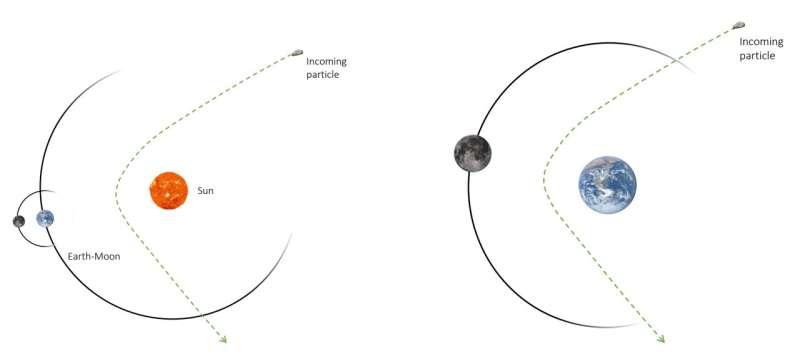May 30, 2023 report
This article has been reviewed according to Science X's editorial process and policies. Editors have highlighted the following attributes while ensuring the content's credibility:
fact-checked
peer-reviewed publication
trusted source
proofread
Simulations suggest interstellar objects could be captured by Earth's gravity

A quartet of space scientists, two from Carnegie Mellon University and two from Harvard University, has found via simulations that it should be possible for interstellar objects to be captured by Earth's gravity. The team, made up of Diptajyoti Mukherjee, Hy Trac, Amir Siraj and Abraham Loeb, has submitted a paper describing their work to the Monthly Notices of the Royal Astronomical Society—currently, it can be read on the arXiv preprint server.
Back in 2017, an object in the solar system (subsequently named 'Oumuamua) was discovered to have come from outside of the solar system, making it the first observed interstellar object (ISO). Two years later, comet 2I Borisov was found to have come from outside the solar system, as well.
The two visits to our solar system generated a wave of interest in the space community surrounding ISOs. Thus far, no more have been discovered, but many in the space science community believe that it is likely that some ISOs have traveled into our solar system, but instead of escaping, became trapped either in a loop around the sun or around one of the planets. In this new effort, the research team looked into the possibility of such occurrences using numerical analysis and simulations.
Prior research into the topic focused almost exclusively on ISOs being captured by the sun or by Jupiter. Because of that, the researchers chose to make their main focus capture of ISOs by Earth.
Via simulations, the team found that it should be possible for an ISO to be caught in a planetary orbit around Earth, but it was 1,000 times more likely to happen to Jupiter. Their simulations also showed that if an ISO were to be captured by Earth's gravity, it would likely have an unstable orbit, meaning its capture would likely be brief, mostly due to the pull of gravity from the other planets.
The researchers were not willing to make any guesses based on their simulations about the likelihood of ISOs currently residing in the solar system, but suggest future work should look into the possibility. They conclude by noting such work will be extremely difficult due to the small size of such objects.
More information: Diptajyoti Mukherjee et al, Close Encounters of the Interstellar Kind: Examining the Capture of Interstellar Objects in Near Earth Orbit, arXiv (2023). DOI: 10.48550/arxiv.2305.08915
Journal information: arXiv , Monthly Notices of the Royal Astronomical Society
© 2023 Science X Network





















